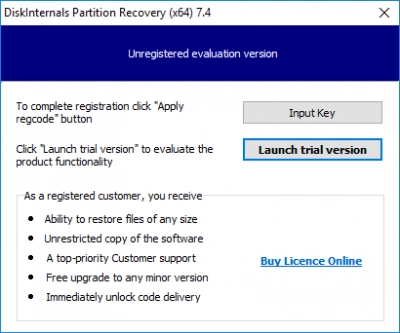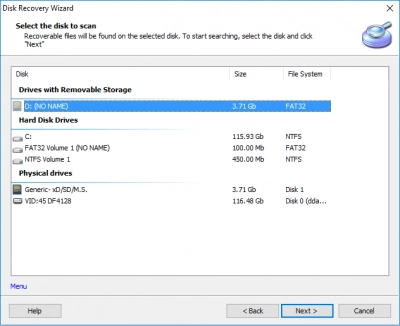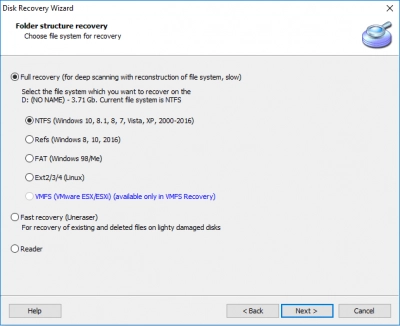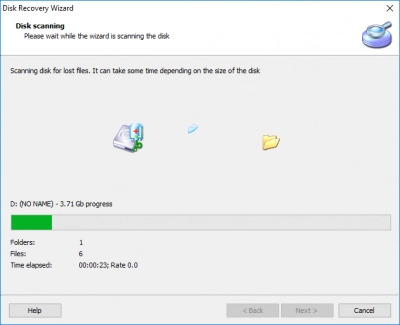Ransomware Data Recovery: How to Recover Files From an Attack
Ransomware is one of the most dreadful threats you can face as a PC user; it encrypts your files and requests you pay to regain access to them. Actually, ransomware is a type of malware, and it is one of the most stubborn ones out there to deal with.
If your PC ever gets attacked by ransomware, you will need a much more powerful data recovery tool to retrieve the affected files. Interestingly, there are a number of such data recovery tools available for computers using Windows OS. Here’s how to recover files from ransomware.
What Is a Ransomware Attack?
Ransomware (“Ransom” and “Ware”) is a malware that gets into your computer through malicious links and downloads. Perpetrators of this malware seek to get money from unlucky people who opened their PC to this malware. What ransomware does is that it encrypts your files, then asks you to pay a particular amount of fee to decrypt the files and regain access.
Well, even if you agree to pay the fine, you won’t still gain access to the files, so, in most cases, once your files get encrypted by ransomware, that’s the end, you can’t get the files back. Notwithstanding, there are tips to protect your files from getting corrupted by ransomware. Also, there are tips that can help you get back the encrypted files if you’re already attacked.
What to Do After a Ransomware Attack?
There are different types of ransomware malware, but that notwithstanding, these are the things you should do immediately after you notice that your computer system has been attacked by the malware.
1. Delete the Affected File and Disconnect the Storage
If you noticed the malware got into your computer after you connected an external device or storage device, delete the infested file or folder and disconnect the drive from your computer immediately. Similarly, if it is your primary disk, you should delete all files that are already affected and remove the drive from your PC.
The essence of removing the drive (whether it is your primary drive or not) is to prevent the malware from spreading further; this way, not all your files will be affected. So, even if you couldn’t regain access to the affected files, at least, you’re sure that not all your files are entirely gone.
2. Identify the Ransomware Type
Mainly, if you got attacked by ransomware malware, your files will be encrypted. If your files are not encrypted, there’s every chance you’re not dealing with ransomware. So you should look up the type of malware that just got into your PC. Once identified, it becomes easier to find a way to get around the situation.
3. Don’t Pay The Ransom
You’d be asked to pay a ransom to decrypt your files so you can have access to them – don’t fall for that trick, even if you pay, you won’t regain access to those files. So, no matter how much you’re being told to pay, ignore it.
How to Recover from a Ransomware Attack
Well, it is almost impossible to recover files that have been encrypted by ransomware, but here are some tips that could help in most cases. So, how to recover files from virus infected USB pen Drive ?
1. Try Using Built-In OS Tools
Every operating system comes with a set of built-in utilities that helps you troubleshoot and fix common issues with the OS and/or the system it is installed on. For Windows OS systems, you can use the “System Restore” feature to roll back recent changes on your computer to a restore point. This method is much more effective in most cases, but modern ransomware attacks also target system restore points and corrupt them, making everything seem more complicated. In such scenarios, try other tips shared here.
2. Get a Ransomware Decryption Tool
After ransomware attacks became popular, a few developers have alleged they were able to develop software tools and programs to decrypt the ransomware-encrypted files. If you’re able to lay your hands on one of such tools, you could use them to decrypt your files and regain access. Avast Anti-Virus has a feature for decrypting ransomware, you can try it out.
3. Use a Professional Data Recovery Software
In some cases, a professional data recovery software can come in handy to help you in getting back your files. Programs like DiskInternals Uneraser are remarkable software apps that can recover virtually any data lost in various scenarios. It works on all Windows OS versions and features a simple interface anyone could easily understand.
DiskInternals Uneraser can read HDD and SSD devices, search deep into them, and recover any file format that was lost from the drives. While there is no guarantee that a data recovery app will decrypt ransomware-encrypted files, the app may recover previously saved – but lost – variants of the encrypted files.
4. Try Partition Recovery Software by DiskInternals
Similar to the Uneraser, DiskInternals Partition Recovery tool is an app that allows you to recover files from a variety of storage media, and it supports over 1,000 file formats. It comes with an integrated preview engine so you can preview your files after they are recovered. Partition Recovery also works on all Windows OS computers and it features an intuitive interface.
How to Use Partition Recovery:
- 1. Download and install DiskInternals Partition Recovery software.

- 2. The recovery wizard will ask you to select the drive or partition.

- 3. Select the recovery mode: full (recommended), fast, or reader. In the full recovery mode, you need to select the file system that was there before it became RAW (it’ll be detected automatically, but you need to put a check on it).

- 4. Next, the scanning process will begin. It takes some time, depending on the size of the logical disk.

- 5. Preview. After scanning is done, you will see a list of recovered files and folders. Right-click on the file and select "Preview in New Window".

5. Restore from a System Backup
Go to Control Panel and select “System and Security.” Then get into the “Backup and Restore” and click on “Restore files from backup.” Now, select “Restore my files” and follow the prompts.
6. Restore from Previous Versions
If you haven’t deleted the encrypted file, you can try this method to see if you can recover a previous good version of the file.
- Open the folder where the file is located
- Select the affected file and right-click on it
- Select “Properties” and navigate to the “Previous Versions” tab
- Restore any of the previous versions
How Long Does It Take to Recover from Ransomware?
There is no particular timeframe for recovering from a ransomware attack. You should start attempting various recovery options as soon as you get attacked. Waiting for too long might cause the malware to encrypt more files, which means you’d be possibly losing more files.
If you typically backup your files to an external drive, delete the corrupted ones, ensure the ransomware virus is no longer on your PC, then connect the backup drive and copy the files back to your PC.
In other words, the longer you wait after a ransomware attack, the scenario gets worse and more of your files keep getting encrypted. Never pay the requested ransom – it’d be a waste of money, and the perpetrators won’t decrypt the files as proposed. The best solution to a ransomware attack is to avoid it.
How to Prevent Virus Attacks Effectively
There are many ways viruses and malware can get into a computer system; you might not be able to possibly prevent all the possible means, but these practices can really help you from importing malware into your computer system.
1. Use strong security measures
The first step to protecting your files from ransomware attacks is playing safe, which basically means integrating and practicing strong security measures. These security measures include using a reliable antivirus or anti-malware software and setting enterprise firewalls to prevent malicious attacks on your business systems.
2. Be Aware of Suspicious Emails, Links, and Attachments
One of the easiest ways phishers, hackers, and malware perpetrators get into your PC is by sending malicious links, emails, or attachments. So when you download those attachments or click on the links, the virus gets into your computer. That said, always verify any link sent to you via email or web documents.
3. Make Regular Backups
Backups are not a way of preventing ransomware attacks, they only provide you with a place to fall back on when the original copies of the backed-up files get mistakenly deleted or corrupted. When you make backups, save the backup copies to an external drive or remote/cloud storage.
Conclusion
How to recover your files after ransomware attacks? The only solution lies in whether you did a backup; if you did a backup, then you should delete the corrupted files, and recover them from your backup drive. Ransomware-encrypted files are practically irrecoverable in most cases.
FAQ
Is it possible to recover files from ransomware?
It is possible to recover files from ransomware in some cases, but it depends on a few factors.
Firstly, it depends on the specific type of ransomware that has infected your system. Some ransomware variants are more sophisticated and use stronger encryption algorithms that make it very difficult to recover the encrypted files without the decryption key. In such cases, it may not be possible to recover the files unless you pay the ransom and obtain the key.
However, there are some ransomware strains that have been decrypted by security researchers or have flaws in their encryption implementation that allow for recovery without paying the ransom. If your ransomware variant has a known decryption tool available, you may be able to recover your files using it.
It's also worth noting that in some cases, the ransomware may not have actually deleted the original files but instead encrypted them and appended a new extension to the file name. In such cases, you may be able to recover the files by removing the added extension and attempting to open the file with the original program.
In general, the best way to protect against ransomware is to ensure that you have a regular backup system in place. This way, even if your files are encrypted by ransomware, you can simply restore them from the backup without having to pay the ransom.
How do I recover an infected malware file?
Recovering an infected malware file can be a difficult task, and it depends on a few factors such as the severity of the infection and the type of malware that has infected the file. Here are some general steps that you can take to attempt to recover an infected malware file:
- Isolate the infected file: The first step is to isolate the infected file by disconnecting it from the network, removing any external storage devices that it may be connected to, and ensuring that it is not being used by any running programs.
- Run a malware scan: Next, run a malware scan on the infected file using a reputable antivirus program. The antivirus software may be able to remove the malware from the file, or quarantine the file if it cannot be disinfected.
- Try to restore from backup: If you have a backup of the infected file, you can try to restore it from the backup. This will remove any malware that was present in the original file.
- Remove the malware manually: If the malware scan did not remove the malware from the file, you can attempt to remove it manually. However, this can be a difficult and risky process, and should only be attempted if you have the necessary expertise.
- Delete the infected file: If all else fails, the safest option is to delete the infected file to prevent the malware from spreading further.
It's important to note that if the infected file is a critical system file or part of a program that you need to use, deleting it may cause system instability or program errors. In such cases, you may need to consult with a professional to help you recover the file or repair any damage that was caused by the malware infection.
Does ransomware delete all files?
No, ransomware does not necessarily delete all files on an infected system. Instead, ransomware encrypts the files on the infected system, making them inaccessible to the user unless a ransom is paid to obtain the decryption key.
The specific files that are encrypted can vary depending on the ransomware variant and its configuration. Some ransomware may encrypt only certain types of files, such as documents, images, or videos, while others may encrypt all files on the infected system.
It's worth noting that while ransomware does not typically delete files, it can still cause significant damage to an infected system. For example, some ransomware variants may modify the Windows registry or other system settings, which can cause system instability or prevent the system from booting up properly. In some cases, the ransomware may also install additional malware or backdoors that can give attackers ongoing access to the infected system even after the ransom is paid.
To protect against ransomware, it's important to maintain up-to-date backups of your important files and to practice safe computing habits, such as avoiding suspicious email attachments and downloading software only from trusted sources. Additionally, you should always keep your antivirus software and operating system up to date with the latest security patches to protect against known vulnerabilities that can be exploited by ransomware and other malware.
What does ransomware do to files?
Ransomware typically encrypts the files on an infected system, making them inaccessible to the user until a ransom is paid to obtain the decryption key. The encryption process usually involves scrambling the contents of the file using a cryptographic algorithm and then locking the file with a unique key that is known only to the attacker.
Once the files are encrypted, the ransomware will typically display a message to the user, informing them that their files have been encrypted and demanding a ransom payment in exchange for the decryption key. The ransom message may also include a deadline by which the payment must be made, as well as instructions on how to make the payment and obtain the decryption key.
Some ransomware variants may also add a new file extension to the encrypted files, such as ".locked" or ".encrypted", to make it clear to the user which files have been affected.
In addition to encrypting files, ransomware can also cause other types of damage to an infected system. For example, some ransomware variants may modify system settings or disable important system features, making it difficult or impossible to use the computer. Additionally, some ransomware may install other malware or backdoors that allow attackers to continue to access the infected system even after the ransom is paid.
It's important to note that not all ransomware behaves in the same way, and the specific actions that ransomware takes can vary depending on the variant and its configuration.
Can ransomware-encrypted files be recovered?
In some cases, it is possible to recover files that have been encrypted by ransomware. However, it depends on the specific ransomware variant, the level of encryption used, and whether or not backups were taken prior to the infection.
Here are some possible ways to recover ransomware-encrypted files:
- Restore from backups: If you have backups of your important files, you can restore them from the backups after removing the ransomware infection. It is recommended to regularly back up your files to avoid losing them in case of an attack.
- Check for built-in decryption tools: Some ransomware authors may provide a decryption tool that can unlock the encrypted files. These decryption tools may be available for free, or you may have to pay a ransom to obtain them.
- Check for publicly available decryption tools: There are websites such as No More Ransom that provide free decryption tools for some types of ransomware. However, not all ransomware types are supported, and the decryption tools may not work for all variants.
- Consult with a professional: If you are unable to recover your files using the above methods, it may be worth consulting with a professional data recovery service. They may be able to use specialized tools and techniques to recover your encrypted files.
It is important to note that paying the ransom demand is not recommended, as there is no guarantee that the attackers will provide the decryption key, and it may encourage them to continue their illegal activities. Additionally, paying the ransom can also result in funding other criminal activities.
To prevent ransomware attacks, it is recommended to maintain regular backups of your important files, avoid downloading attachments or clicking on links from unknown sources, keep your operating system and antivirus software up-to-date, and be vigilant against phishing attempts.
Is it possible to decrypt ransomware files?
It is sometimes possible to decrypt ransomware files, but it depends on several factors, such as the type of ransomware, the level of encryption used, and whether or not a decryption tool is available.
There are two types of encryption commonly used by ransomware: symmetric and asymmetric encryption. Symmetric encryption uses the same key to encrypt and decrypt the data, while asymmetric encryption uses a public key to encrypt the data and a private key to decrypt it. In the case of ransomware, the attacker typically keeps the private key, making it difficult to decrypt the files without the decryption key.
What should we do after ransomware attack?
- Disconnect from the internet: As soon as you suspect that your computer has been infected with ransomware, disconnect it from the internet to prevent the ransomware from communicating with the attacker's servers.
- Identify the type of ransomware: Take note of the type of ransomware that has infected your computer. This information will be useful when looking for a solution to recover your files.
- Determine the extent of the damage: Check which files have been encrypted and how much data has been affected. This will help you determine whether it is worth attempting to recover the encrypted files or whether it is better to restore from backups.
- Do not pay the ransom: Paying the ransom does not guarantee that you will regain access to your files, and it may encourage attackers to continue their illegal activities. Instead, look for other solutions to recover your files.
- Remove the ransomware: Use antivirus software or other malware removal tools to remove the ransomware from your system. Be sure to run a full system scan to ensure that all traces of the ransomware have been removed.
- Recover your files: If you have backups of your important files, you can restore them from the backups after removing the ransomware infection. If you don't have backups, you can check for publicly available decryption tools or consult with a professional data recovery service.
- Strengthen your security: Once your computer has been cleaned of the ransomware, take steps to strengthen your security to prevent future attacks. This may include updating your operating system and antivirus software, avoiding suspicious emails and links, and maintaining regular backups of your important files.
What is the best solution against ransomware?
The best solution against ransomware is a combination of preventive measures and a solid backup strategy. Here are some steps you can take to protect yourself against ransomware:
- Keep your operating system and software up-to-date: Ransomware often exploits vulnerabilities in outdated software. Be sure to install updates and security patches as soon as they become available.
- Use antivirus software: Use a reputable antivirus software and keep it up-to-date to help detect and prevent ransomware infections.
- Be cautious of email attachments and links: Ransomware often spreads through phishing emails, so be careful when opening attachments or clicking on links from unknown or suspicious senders.
- Use strong passwords: Use strong, unique passwords for each account and enable two-factor authentication where possible.
- Backup your data regularly: Regular backups of your important data can help you recover from a ransomware attack without paying the ransom. Be sure to store your backups offline or in the cloud to prevent them from being affected by the ransomware.
- Educate yourself and others: Educate yourself and others about the risks of ransomware and how to protect against it. Stay up-to-date on the latest threats and best practices for cybersecurity.
Do you get your files back if you pay ransomware?
There is no guarantee that you will get your files back if you pay the ransomware. In some cases, paying the ransom may result in the attacker providing the decryption key to unlock your files, but there have been instances where victims have paid the ransom and still did not receive their files. Additionally, paying the ransom only encourages the attacker to continue their illegal activities.
